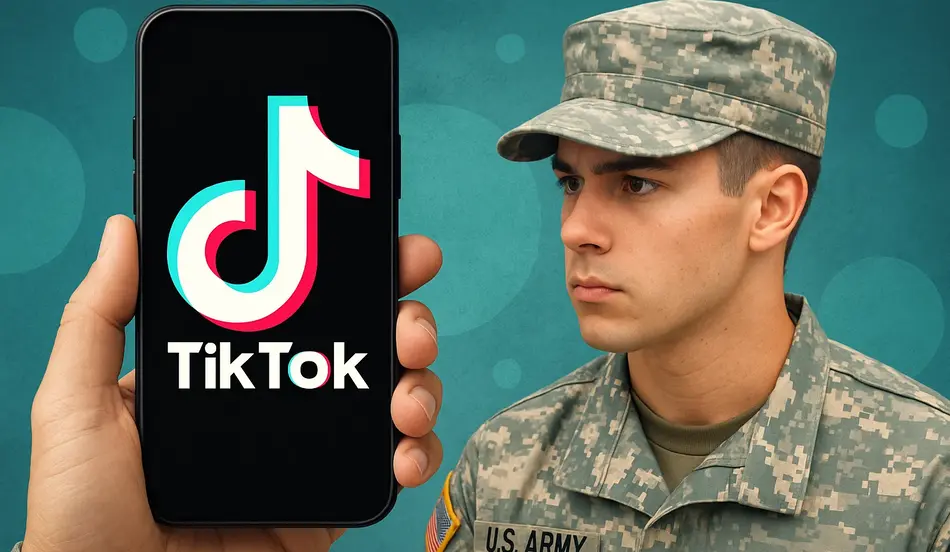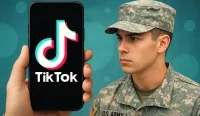The U.S. Army has long relied on traditional recruiting tools: television ads, posters, high school visits, and career fairs. But in 2025, recruiters are adapting to a radically different landscape. Gen Z lives online—especially on TikTok.
In a striking shift, the Army is now leveraging influencers and short-form video content to reach potential recruits. Despite official bans on TikTok for government devices due to data privacy concerns, Army recruiters are tapping into the platform’s popularity to showcase camaraderie, career benefits, and military life.
This move reflects both desperation and innovation. Recruitment numbers have lagged in recent years, with the Army struggling to meet targets. TikTok is viewed as both a challenge and an opportunity—a way to bridge cultural gaps with digital natives.
Why TikTok?
TikTok is Gen Z’s default platform:
- Over 58% of U.S. teens and young adults use it daily.
- Content is fast, visual, and emotional—perfect for storytelling.
- Influencers wield credibility far beyond traditional ads.
For the Army, this is critical. Traditional ads fail to connect with younger generations, who distrust institutions and prefer authentic peer-driven narratives.
The Recruitment Crisis
The Army’s TikTok push comes amid a broader recruitment shortfall:
- In 2023 and 2024, the Army fell short of its recruiting goal by tens of thousands of soldiers.
- Rising obesity, mental health challenges, and stricter eligibility requirements have reduced the pool of qualified candidates.
- Competition from private employers offering flexible, high-paying jobs has intensified.
The Army’s solution? Meet young people where they are—on their phones.

How the TikTok Campaign Works
1. Influencers as Recruiters
Rather than uniformed officers delivering scripted pitches, the Army has partnered with veterans, military spouses, and serving soldiers who create relatable, entertaining content.
2. Content Themes
Videos highlight:
- Camaraderie and friendship in the service.
- Adventure—training, travel, and unique experiences.
- Financial benefits—tuition aid, steady pay, healthcare.
- Everyday life—soldiers cooking, working out, or gaming.
3. Storytelling vs. Selling
The strategy emphasizes authentic stories, not overt recruitment pitches. The idea is to inspire curiosity first, then direct interested viewers to official channels.
Why It Works
Gen Z responds to:
- Peer validation: They trust influencers who “look like them.”
- Short attention spans: TikTok’s rapid-fire videos are digestible.
- Transparency: Behind-the-scenes content feels honest and unscripted.
One recruiter put it bluntly: “Posters don’t move kids anymore. TikTok does.”
The Controversy
The Army’s TikTok strategy has sparked heated debate:
- Security Risks: TikTok remains banned on government devices due to its Chinese ownership and potential data risks. Critics say recruitment should not rely on a platform deemed unsafe for official use.
- Ethical Questions: Targeting young, impressionable audiences with stylized military content raises concerns of glamorizing war.
- Misinformation Potential: Unofficial accounts could spread misleading portrayals of military life, complicating oversight.
Civil liberties advocates warn this may cross a line between marketing and manipulation.
Comparisons with Past Campaigns
- 1980s: “Be All You Can Be” ads dominated television.
- 2000s: Post-9/11 campaigns emphasized duty and patriotism.
- 2020s: The Army briefly ran “woke” campaigns highlighting diversity, which drew political backlash.
- 2025: TikTok marks a pivot to digital-first, influencer-driven recruitment.
This evolution reflects a broader cultural shift: the battleground for attention is no longer TV screens but mobile feeds.
Recruitment in the Digital Era
Other militaries are also experimenting:
- The British Army has run influencer-led campaigns on YouTube and Instagram.
- South Korea uses K-pop collaborations to highlight military service.
- China’s PLA has invested heavily in gamified recruitment apps.
The U.S. Army’s TikTok strategy is part of a global trend of militaries adopting pop culture marketing to engage younger demographics.
Recruit the Digital Generation
Just like modern militaries, employers must adapt. Use WhatJobs to reach Gen Z and Millennials where they are—online, mobile, and engaged.
Post a Job Now →Voices from Gen Z
- “I never thought about the Army until I saw a soldier on TikTok showing what his day was like. It seemed real—not a commercial.” – 19-year-old student, Atlanta.
- “It’s weird they’re on TikTok if it’s supposedly banned. But honestly, that’s where I get my info.” – 21-year-old in Texas.
- “If they’re using influencers, it feels less intimidating. It’s like seeing an older brother talking about his job.” – 18-year-old high school senior, Florida.
Potential Risks of Overreliance on TikTok
- Short-Term Hype, Long-Term Doubts: TikTok may generate attention, but not necessarily long-term commitment.
- Oversimplification: Glossy content risks ignoring the difficult realities of military service.
- Platform Dependency: Overreliance on a single platform makes recruitment vulnerable to policy shifts or bans.
The Future of Military Recruitment
Experts suggest the Army’s TikTok push is only the beginning. Future strategies may include:
- Virtual reality recruitment: letting potential recruits “experience” training through immersive VR.
- AI-driven personalization: tailoring recruitment messages to individual interests.
- Gamified platforms: integrating recruitment into popular games.
Whether these strategies succeed will depend on balancing authenticity, security, and ethics.
FAQs
Q1: Why is the Army using TikTok despite banning it on government devices?
Because TikTok remains the dominant platform for Gen Z. While it’s banned on official devices, private influencers and recruiters use personal accounts to engage audiences.
Q2: What kind of content is being posted?
Short videos showing daily military life, financial benefits, camaraderie, and adventurous experiences.
Q3: Is this effective?
Early data suggests TikTok campaigns increase awareness and drive traffic to official recruitment sites, though it’s too soon to measure long-term enlistment outcomes.
Q4: What are the risks?
Security concerns, ethical questions about targeting youth, and potential glamorization of service.
Q5: How does this compare to past campaigns?
Unlike TV-driven campaigns of the past, TikTok relies on authenticity, influencers, and digital storytelling to reach younger audiences.
Conclusion
The U.S. Army’s TikTok strategy reflects a recruitment system under pressure—and a willingness to adapt to generational shifts. It blends necessity with innovation, reaching Gen Z in the digital spaces where they live.
But it also raises tough questions about security, ethics, and representation. As recruitment challenges grow, TikTok may be a powerful tool, but it cannot substitute for deeper conversations about the realities of military life.
What is clear is that the battlefield for the next generation of recruits will not be in classrooms or television ads—it will be on screens, in feeds, and in the fast-moving digital culture of Gen Z.




